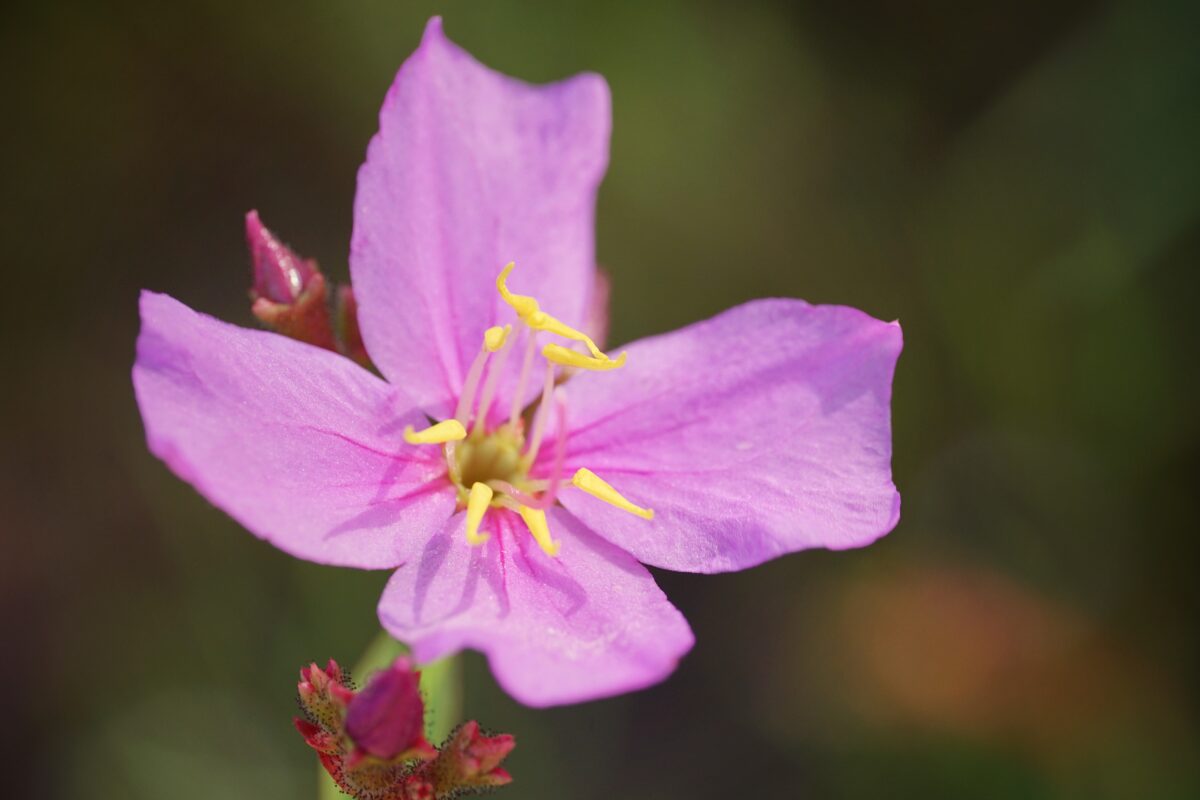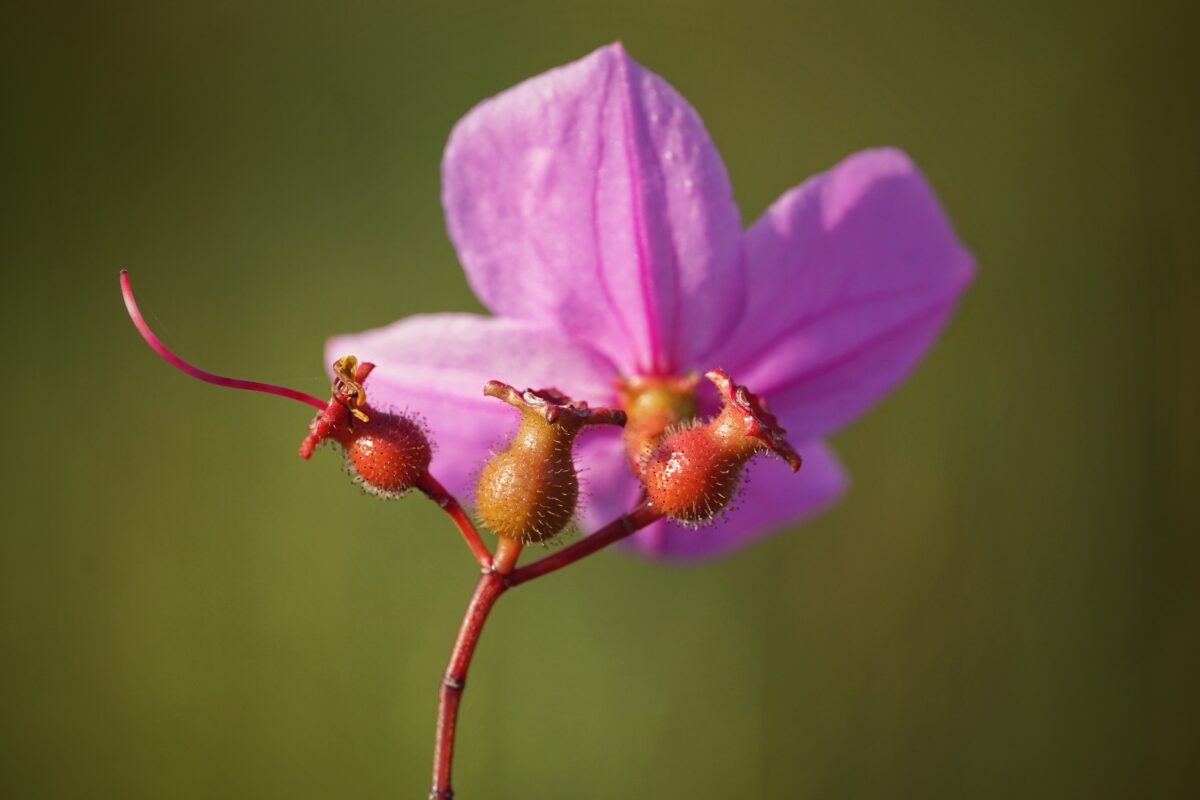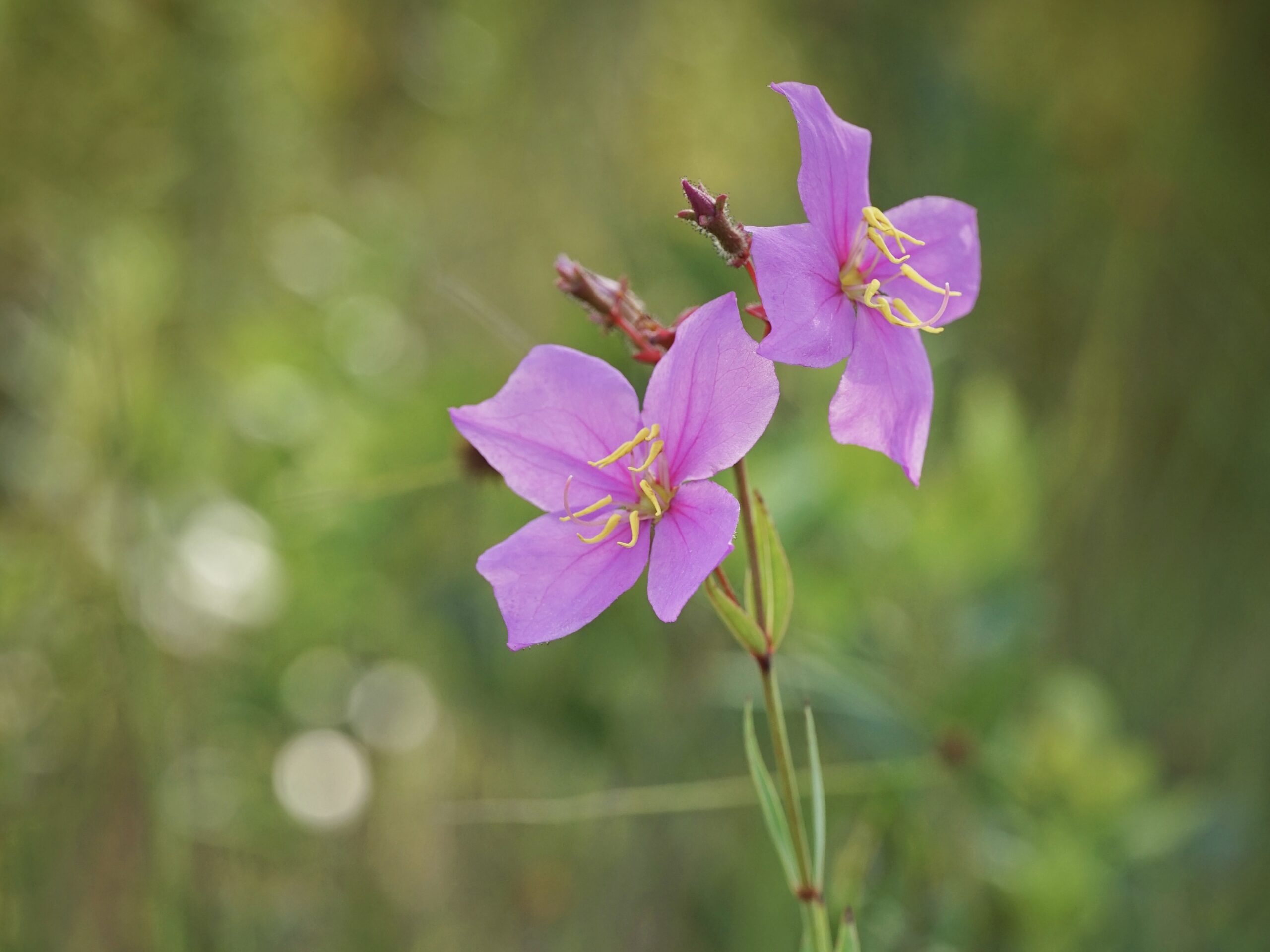Savannah meadowbeauty
Pictured above: Savannah meadowbeauty (Rhexia alifanus) by Emily Bell. Click on terms for botanical definitions. View post as a PDF.
Of Florida’s 10 native meadowbeauties (Rhexia genus), the Savannah meadowbeauty (Rhexia alifanus) stands among the tallest at around 4 feet. Its bright pink blooms can be seen rising up like flags from the shorter vegetation of the pine flatwoods, wet savannahs and roadside ditches.
Flowers have 4-5 magenta petals with 8 conspicuous stamens topped by bright yellow anthers. Fruits are upright vase-shaped capsules containing numerous seeds. Leaves are opposite, sessile, bright green to light blue-green, and lanceolate with entire margins. Stems are smooth, yellow-green and stand erect up to 4 feet tall.


Meadowbeauties are pollinated by bees through buzz pollination, a technique in which bees use vibration to remove and collect pollen. Only about 9% of flowers are pollinated in this way. These flowers have unique anthers that are completely sealed except for a small pore at the top or small slits along the sides. The tiny openings prevent insects from entering the anther, but do allow for pollen to exit when the anther is vibrated at specific frequencies. If you listen closely as bees approach the flowers, you can actually hear a change in their buzzing!
Family: Melastomataceae (Melastomes)
Native range: Panhandle, northern peninsula, and southeast to Orange County
To see where natural populations of Savannah meadowbeauty have been vouchered, visit florida.plantatlas.usf.edu.
Hardiness zone: 9B–8A
Lifespan: Perennial
Soil: Moist, acidic, sandy soil
Exposure: Full sun
Growth habit: Erect herb up to 4’ tall
Propagation: Seed
Savannah meadowbeauty plants are not commercially available. Visit a natural area to see them.
For more information on other Rhexia species, see:
Fringed meadowbeauty (Rhexia petiolata)
Pale meadowbeauty (Rhexia mariana)

